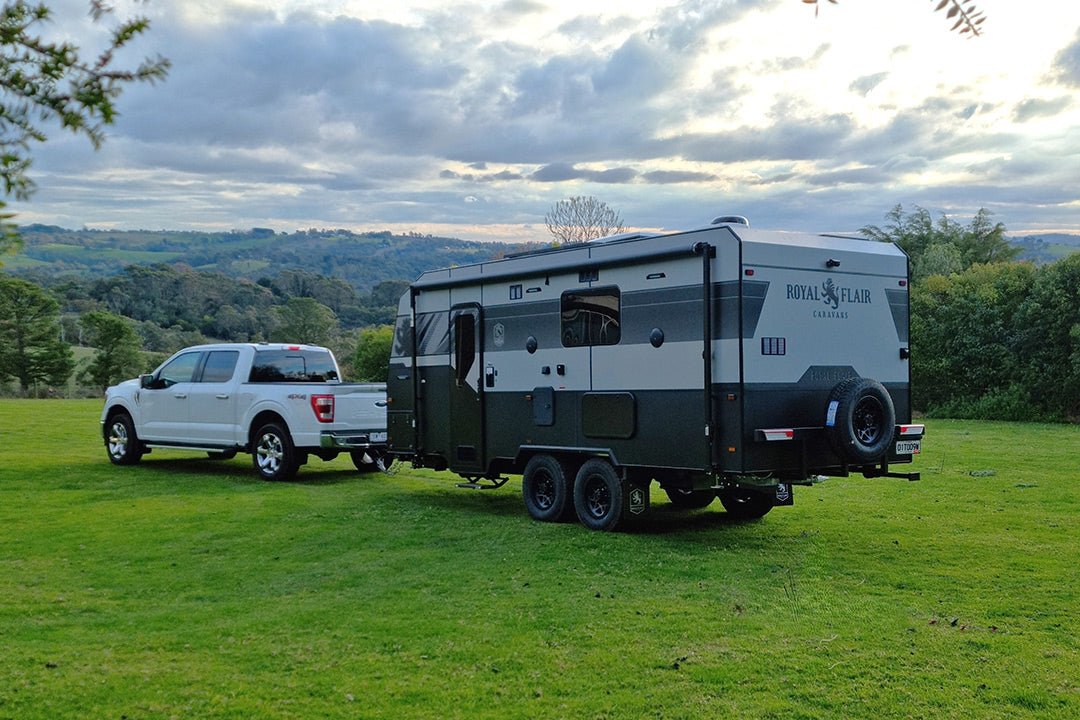Caravan Safety On The Road
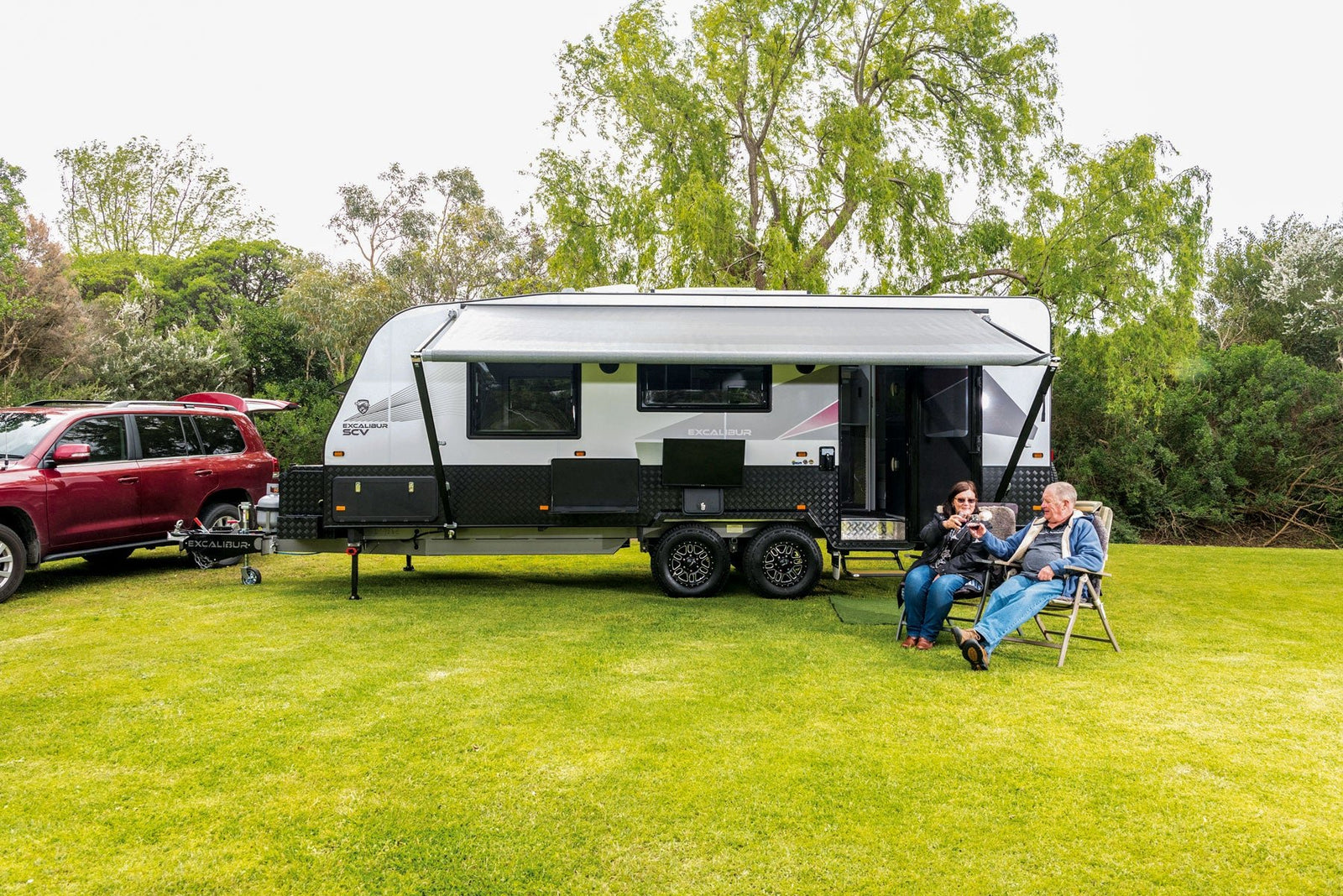
It’s any traveller’s worst nagging fear – that the caravan or motorhome which has become their own little world on wheels, is severely damaged or destroyed while on a trip.
Worse still that this happens while it’s occupied by them and those nearest and dearest to them.
Statistics suggest that a van or RV is up to nine times more likely than a fixed dwelling to be involved in a severe fire. There’s very little in a mobile dwelling which won’t burn, so once a fire takes hold, the result is usually catastrophic damage and total loss. The speed and inevitability of total destruction can be astounding literally a handful of minutes from first ignition to complete loss.
What’s left after a caravan or RV fire is usually just the heavier steel components: the chassis, major suspension parts and wheels, if they weren’t aluminium. If you’ve ever seen pictures of the aftermath of such a fire, you’ll understand.
Interestingly, statistics from insurers suggest that caravans particularly are more likely to catch fire while in storage than when in daily use.
SOURCES OF FIRE
Fires can start from a variety of places – the obvious ones inside the vehicle itself are cooking fires, cigarettes and occasionally, gas or electrical failures, usually from overloaded circuits or wiring which has chafed, perhaps where it passes through an unprotected bulkhead, cabinet or wall.
External sources of fires are often unattended cooking or camping fires stirred up by night breezes after everyone’s gone to bed, or parking the tow-vehicle in long grass, which catches fire after touching the catalytic converter in the hot exhaust.

Once upon a time, campers and caravans were just a wooden-framed, aluminium-skinned box with a bed, table and chairs. Now modern rigs are just as sophisticated as a conventional house with heating, cooling, plumbing, solar arrays and cooking facilities – with all of them contained in a much smaller space.
Plus, the average house doesn’t routinely cruise down the road at anything up to 110 kmh or go plunging through the bush on brutally rough roads and tracks. That alone is a compelling reason to ensure any upgrades or modifications are done by an industry-trained technician.
It’s worth remembering too, that most caravans have only one small door if you need to evacuate everyone in a hurry and getting out a window might not be an option. RVs are usually a bit better served with points of egress.
FIRE EQUIPMENT
The law says you’re obliged to carry a fire extinguisher in your rig (see Australian Design Rule 44/01). That’s the minimum – but why stop at one? A fire blanket near the stove and a couple (or more) of extinguishers in various places aboard is never money wasted. But what type? A so-called dry-powder ABE extinguisher is best for tackling the variety of fires which could be expected in a caravan or RV. Its label will specify it as suitable for A, B and E-type fires, which are flammable materials (A) like wood or paper, flammable liquids (B) such as petrol and paint, and electrical equipment (E) such as inverters and chargers. Using dry powder on computers will likely make them permanently unhappy – but that’s better than losing everything.
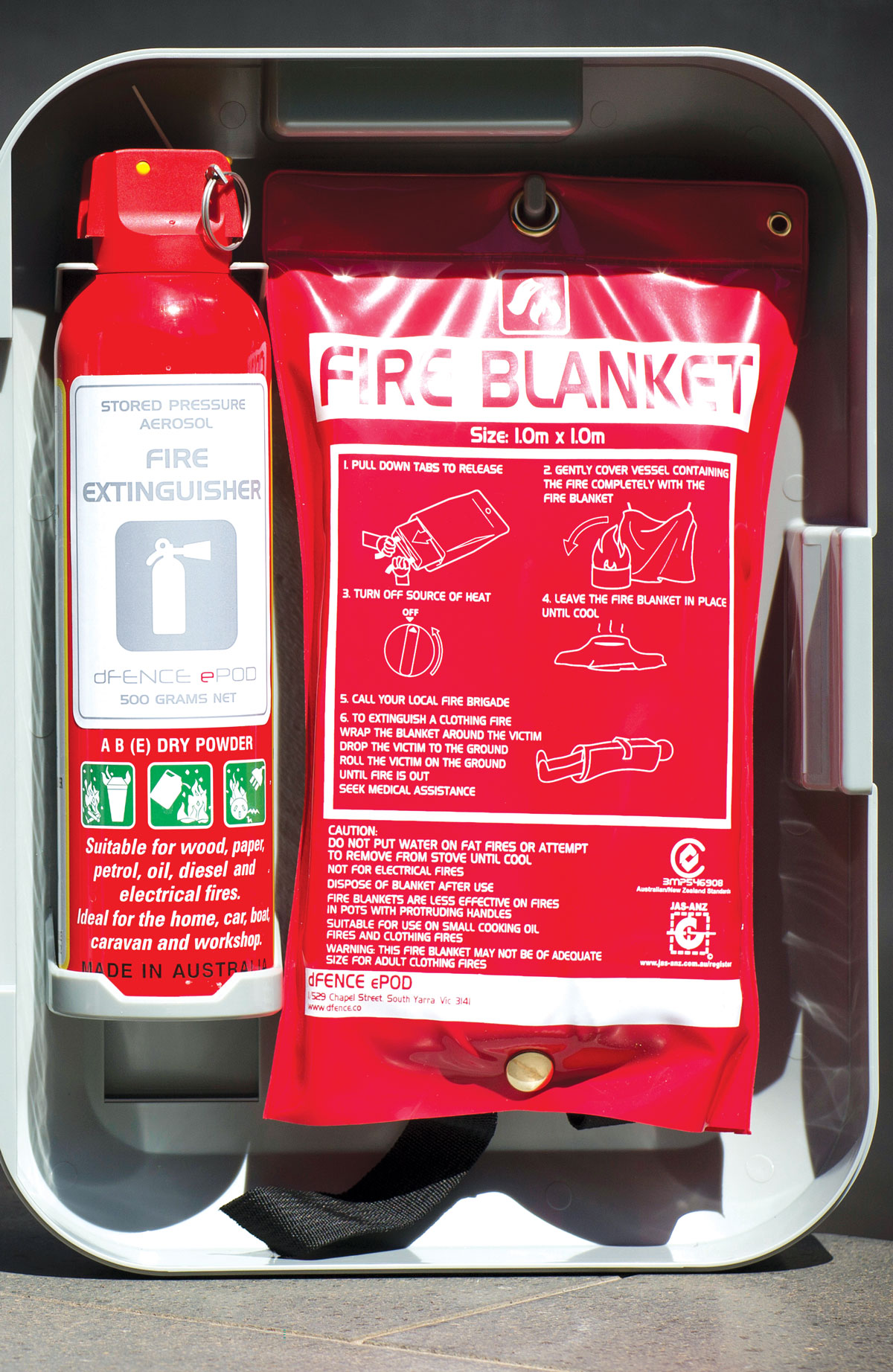
With a fire blanket to contain a cooking fire and a couple of ABE extinguishers readily to hand, a small outbreak might be contained. Using a pressurised extinguisher on moveable fuel – like burning oil on the stove – is a bad idea as the force of the jet could actually spread the fire around even more.
BATTERIES
Of course, a modern carbon monoxide detecting smoke alarm with fresh batteries is a given wherever people are going to be asleep.
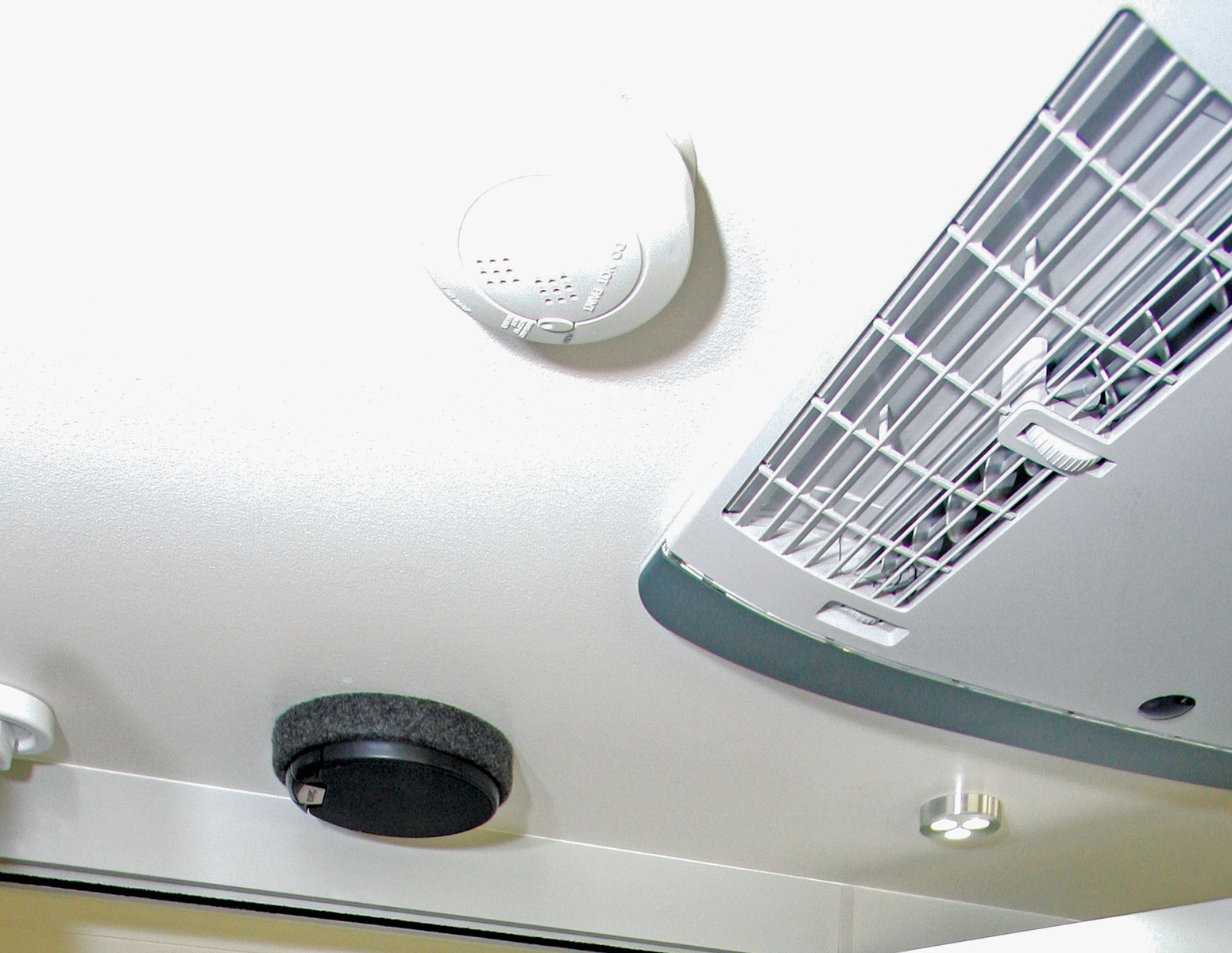
Other risks to human wellbeing exist in the gas and electrical components fitted to our vehicles, especially in colder weather when windows and vents might be closed, and heaters might be running. Carbon monoxide is odourless, tasteless and unlike carbon dioxide, irreversibly damages the blood cells used to transport oxygenated blood in the body.
Batteries are often situated under the floor of towed vehicles, in lined and protected compartments. Manufacturers know to give batteries lots of space, and to keep them away from anything that could cause a short circuit or be affected by the battery doing what it does. The trouble is that some users decide to fit more or bigger batteries, or to use the ‘spare’ extra space as useful storage for stuff like groundsheets, which are often wet. A moment’s thought will identify the error here!

Old-style flooded lead-acid batteries have all but disappeared now, thankfully. One of the by-products of sulphuric acid and lead plates is hydrogen gas; it’s the smallest atomic element, so slips though almost anything, it’s lighter than air so it rises, and is highly flammable. Think of the Hindenburg airship and its demise.
Dodgy DIY wiring, especially around solar panels, inverters and the 240v circuits, might not immediately be apparent – vehicles are nicely insulated on their rubber tyres, until someone standing on the ground grabs a door or hatch handle. It’s really a false economy to avoid paying a professional to do this stuff.
If your caravan, tug or motorhome is fitted with Lithium-Ion batteries a F-500 extinguisher is a major step towards putting out those batteries, which pose significant environmental and safety issues if they are ruptured. Happily, the F-500 has no impact on the environment and is also useful on oil fires, although they are expensive and cannot easily be recharged.
IN-TRANSIT DAMAGE
Of course, fire isn’t the only thing which can go wrong, but it is the most common. In-transit damage can occur too – most commonly the loss of control at speed thanks to the usual array of road hazards such as fatigue, wildlife, other drivers and sudden road conditions like potholes. And the most common - poor weight distribution causing instability.
How to avoid or deal with the non-musical wiggles is a complex issue best covered separately, but if the worst has already occurred, the steps taken are the same as with any other vehicle crash. Evacuate all the people to safety and contact the emergency services by dialling triple zero (that’s 000 not OOO – triple oh will get you nowhere).
Where a caravan or RV incident differs from a regular vehicle collision is that the “house” part of your rig contains all the risks to life and limb mentioned above, with their associated hazards. What’s different is that in the impact, combustible or corrosive elements may have burst or been spilled. If the whole plot has either fallen over or become completely inverted, it’s probably a write-off anyway, but those liquids, fluids and burny, bitey things could get catastrophically worse in a heartbeat: consider the effects of a short-circuited wire as liquid fuel or gas reaches it from a ruptured tank or line.
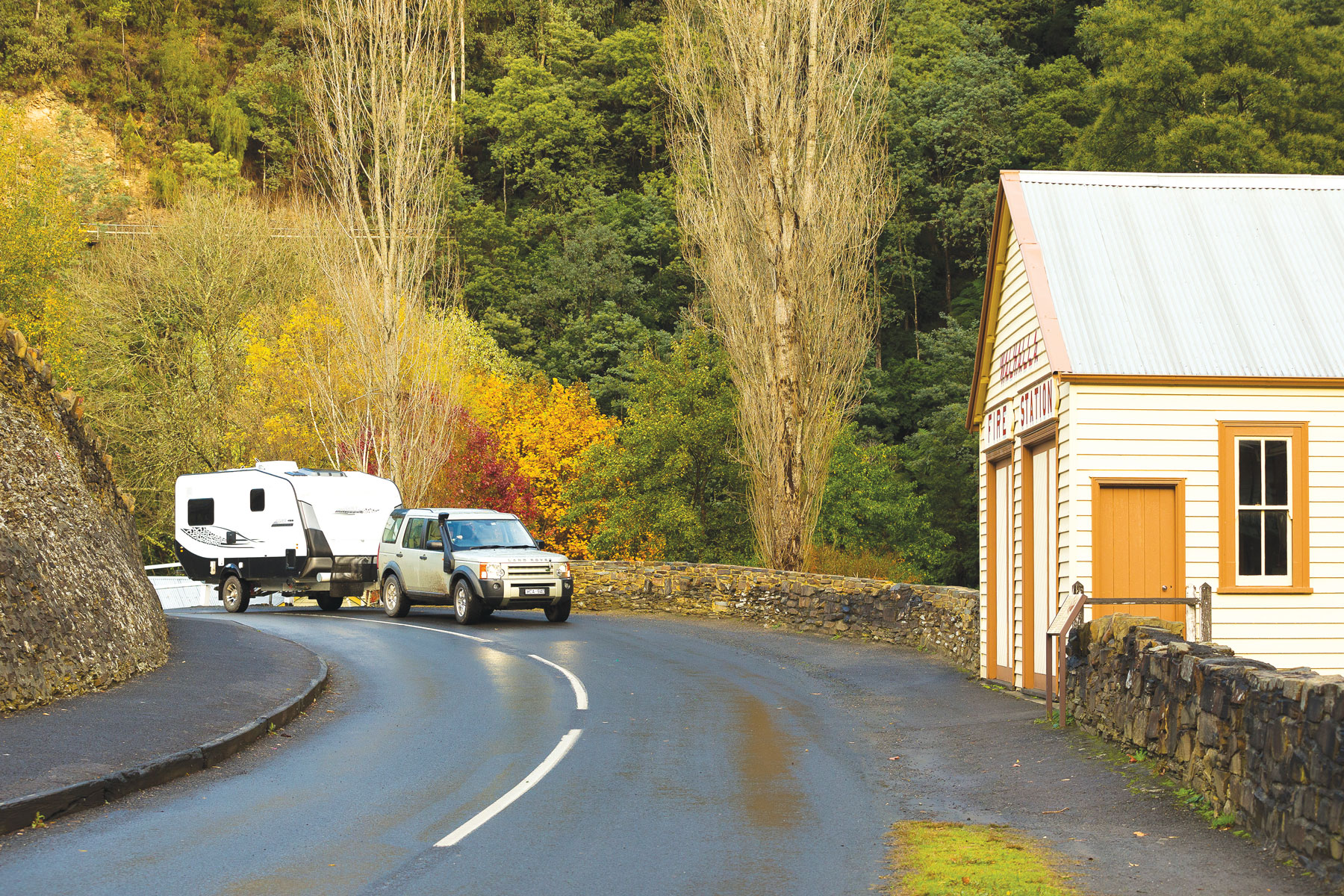
Thus, the logical thing to do is to put a safe distance between you and the carnage but in the aftermath, people seldom do the sensible thing and well-meaning folk will inevitably stop and try to render aid, too close to a crash scene which is potentially highly volatile.
The growing number of electric vehicles and the use of multi-cell lithium batteries will surely increase in our recreational activities. This is a not-yet-fully understood area too, and something for another time and place. Let’s just leave it with the knowledge that a phenomenon known as ‘thermal runaway’ in the large tractive batteries used in electric vehicles has been known to re-ignite catastrophic fires days or even weeks after they’ve initially been extinguished.
Related Articles:
OFF-ROAD SURVIVAL AND SAFETY ESSENTIALS
HOW TO: GET READY FOR A CARAVAN TRIP
BEGINNER CARAVANNING GUIDE - WHAT TO DO WHEN YOU’RE STARTING OUT







